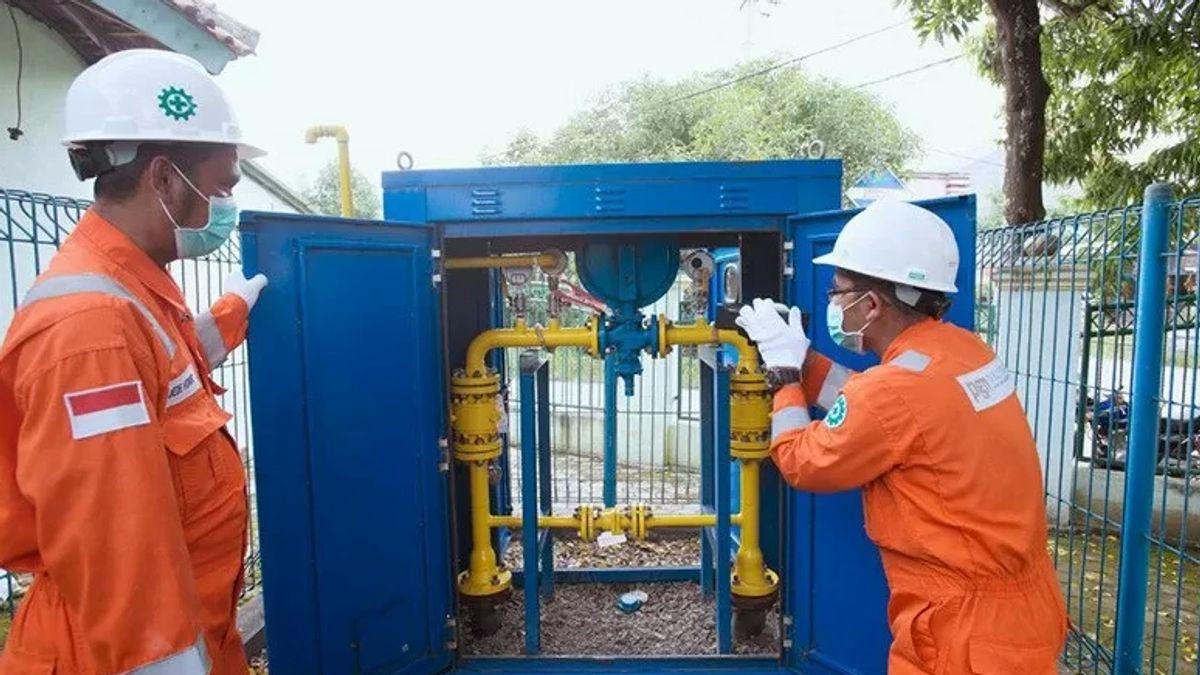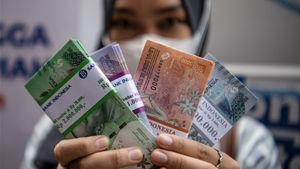JAKARTA - PT PGN Tbk continues to strive to provide natural gas that is evenly distributed throughout Indonesia. Therefore, PGN utilizes and monetizes Liquid Natural Gas (LNG) through the regasification of power plants and other potential sectors which are located in various regions.
In accordance with Ministerial Decree 13/2020, PGN is collaborating with PLN to implement a power plant regasification program in 56 locations, previously at 52 locations.
There are 32 Phase 1 locations (updated from PLN) that are ready for the gasification program, spread across West Kalimantan, Nusa Tenggara, Papua, Maluku, and Sulawesi. Gas demand for the 32 locations is around 79 BBTUD and will be met with LNG/Gas.
PGN's Director of Strategy and Business Development, Heru Setiawan, explained that the challenges faced in LNG utilization lie in choosing the most competitive logistics scheme and use of technology. But still prioritizing reliability, security, and affordable prices to create efficiency in the supply chain.
“To create efficiency in the supply chain, we divide the 32 locations into 5 (five) clusters, namely Kalimantan, Sulawesi, Maluku, Papua, and Nusa Tenggara. Then we also identify the source of stranded gas that will be used. For Papua through Tangguh and Sorong LNG. Then Ambon is the closest to Sorong gas or Ambon itself. For Kalimantan, it will be supplied from Bontang or Tangguh,” explained Heru in an official statement, Thursday, October 14.
The logistics scheme for the Kepmen 13 program is projected by sea and/or land routes. By sea, LNG from LNG Plant/Storage is transferred by LNG Transportation to be transported to the Jetty. From the jetty, LNG will be transferred to LNG Storage Tanks at each location to be transformed by the regasification unit and then measured by the Gas Metering System to the PLN power plant.
"Our spirit is to distribute natural gas while prioritizing reliability, safety, and efficiency," added Heru.
Heru continued that not only the gasification program for power plants, the Mini LNG Supply Chain could be an alternative option in LNG utilization efforts. In this way, LNG will be utilized and distributed to various regions through various schemes according to the supply and demand conditions of each region.
“One of them is using trains as a mode of transportation for LNG distribution. In connection with the Subholding Gas program, namely city gas, one of the options that will be carried out is to use trains to carry LNG isotanks to major cities in Indonesia," said Heru.
Along the way, PGN continues to synergize with local governments. This synergy is expected to create a sustainable multiplier effect for regions in monetizing natural gas. The development of Mini LNG Plants can encourage equitable distribution of gas infrastructure in the local area.
In addition, it is expected to increase regional income, employment, and transfer knowledge to local human resources, as well as the potential for increasing the fishing industry by building cold storage around the LNG storage location.
Heru added that there are two keys to success in LNG utilization, namely source flexibility and infrastructure flexibility. The flexibility of sources utilizing the nearest LNG source results in the most optimal logistics costs.
Meanwhile, infrastructure flexibility means being flexible in the choice of LNG refinery infrastructure, LNG supply chain, as well as rafsification (on shore or platform) to optimize infrastructure costs and construction time.
The English, Chinese, Japanese, Arabic, and French versions are automatically generated by the AI. So there may still be inaccuracies in translating, please always see Indonesian as our main language. (system supported by DigitalSiber.id)









